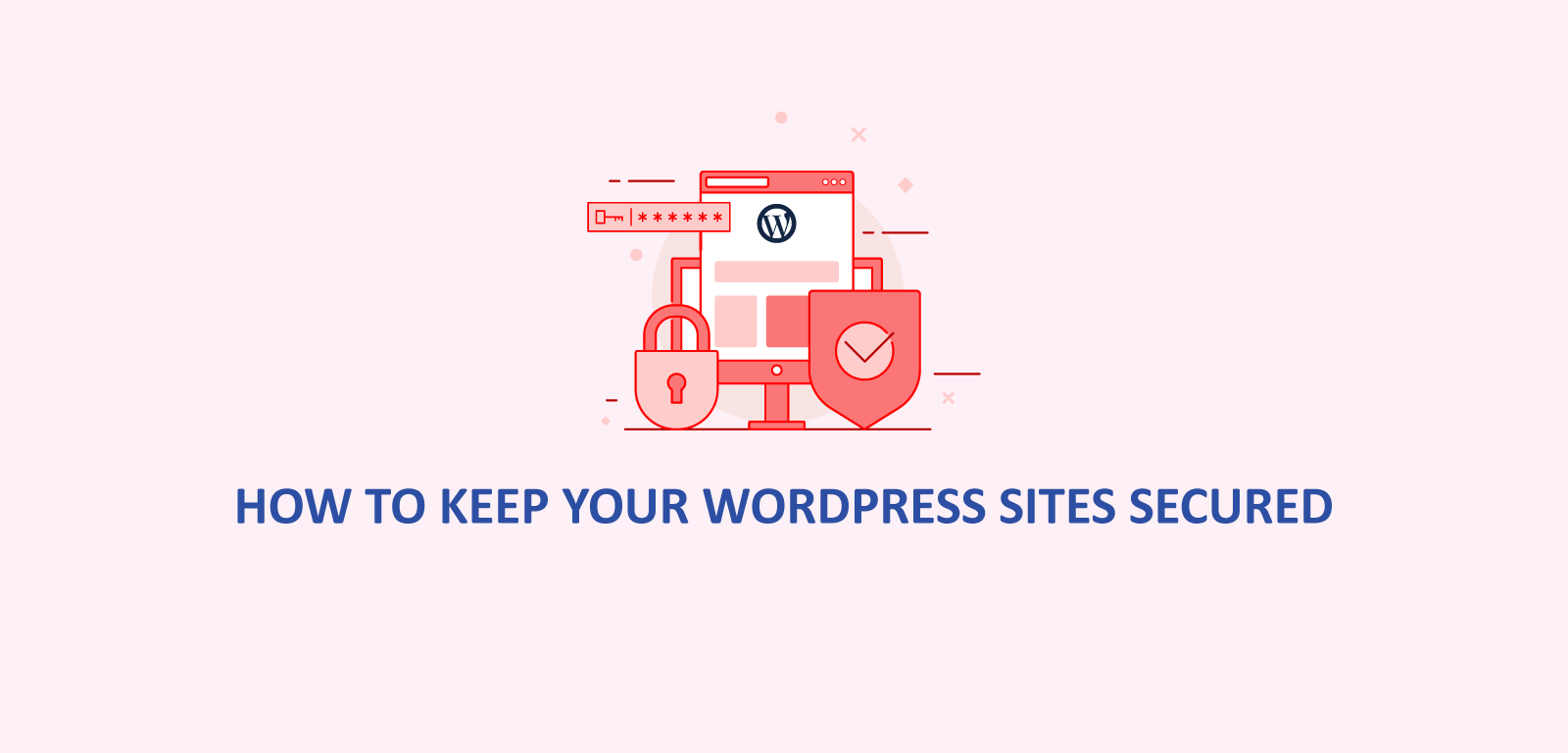How to keep your WordPress sites secured

One of the myths about WordPress that has made waves for years was that "Wordpress is highly insecure.” While this may be true to some aspect, it has been observed that one of the most significant challenges to WordPress sites is in the fact that hackers who are after your details may provide the themes and plugins. One other factor that predisposes WordPress sites to insecurity is found in the fact that it is an open source script which may be vulnerable to a high level of attack. In this article, we shall examine ways of making your website as secure as possible.
Keeping your WordPress site secure can be done in two ways:
PART A: protecting the login page and preventing brute force attacks
The URL to the WordPress standard login page is accessible to everyone on the internet. The backend of the website can be accessed from there, and that is one of the main reasons why people brute force their ways into your account by adding /wp-login.php or /wp-admin/ to your domain name.
The first step to keeping your WordPress sites as secure as possible is to customize the login page through the following ways:
1. Set up a website lockdown feature and ban users
This can solve a lot of problems associated with continuous brute force attempts on your site. This comes in handy whenever a hacking attempt with repetitive passwords is made on your site. The lockdown feature will lock your site and get you notified of this unauthorized activity for you to take immediate action. Based on research, it was discovered that the iThemes Security plugin offers this feature to its users. It also comes with over 30 other remarkable security measures which allow you to specify a certain number of failed login attempts before the plugin bans the attacker’s IP address.
Click here to know Pros and Cons of Wordpress Web Development.
2. Use 2-factor authentication
The use of 2-factor authentication (2FA) module on your login page is another unusual security feature. It creates an avenue whereby the user provides details for two different components. It gives the website users the chance to decide which parameters to be used for the 2FA verification. In most of the cases, it is usually a regular password followed by a secret question, a secret code and a set of characters or through the use of the Google Authentication app, which allows you to send a secret code to your phone. When you use this, only someone who has access to your phone can log in to your account.
Things you should know before outsourcing wordpress development work
3. Utilize email to log in
Wordpress is designed in such a way that you tend to make use of your username to log into your account. Rather than doing this, you can make use of an email ID instead of the customary username which is more secure. While usernames may be easy to guess, it is quite impossible to guess your email ID unless you reveal it to someone.
Click here to know Benefits of having your website in WordPress.
4. Adjust your passwords
Keep your passwords updated from time to time to make it uneasy for users to guess. Always make sure your password is strong and contains special characters with a combination of upper, lower case and numbers.
5. Automatically log idle users out of your site
Keep your website updated by removing all idle users out of your site. These users may serve as a loophole through which hackers can access your account.
Click here to know 10 Myths about WordPress.
Part (B): Secure your WordPress website through the admin dashboard
One of the most intriguing parts of a site which attracts a hacker is the admin dashboard which is the most protected section of all. An attack on the admin dashboard is more or less like an attack on the strongest part of your web page. To secure your WordPress admin dashboard, we suggest you take note of the following:
1. Protect the wp-admin directory
This is the heart of any WordPress website. One of the best ways to protect the wp-admin page is to submit two passwords. While one is aimed at preserving the login page, the other secures the WordPress admin area; the other is channelled into the protection of the login page.
2. Use SSL to encrypt data
Using a Secure Socket Layer (SSL) certificates is one of the smartest ways to keep your admin panel as secured as possible. This certificate ensures that the transfer of data between the user browser and the server makes it difficult to hack or breach the connection or spoof our info.
3. Add user accounts with care
Running a WordPress blog or multi-author blogs creates an avenue where more than one person has access to the admin panel, and this can predispose your site to security threats.
Improving the security level of your WordPress site is completely your duty. Kindly contact us f you have any question on WordPress, we will be glad to hear from you.

Thirumalesh Prasad C G (Thiru) is an entrepreneur, Founder, and CEO of Inboundsys. He has over 22 years of experience working for various multinational IT products and services companies in India and abroad. He was a significant member and worked as a user interface architect, designing the user interface for many web applications and products. In addition to running Inboundsys, he is an advisory board member in various other design studios and digital marketing agencies. He is a passionate blogger who loves writing on digital marketing, inbound marketing, lifestyle, philosophy, positive thinking, and motivation.
